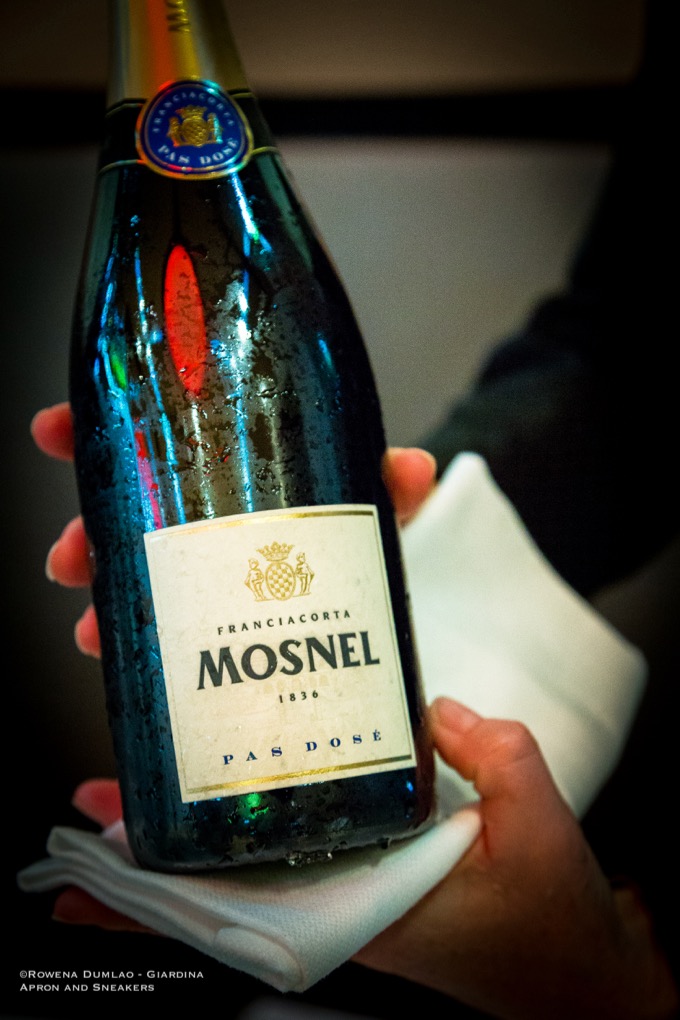Festival Franciacorta 2016 in Rome, Italy
It's interesting to know that Franciacorta's effervescent wines had already been in one of the world's earliest publications about winemaking in 1570, about a hundred years ahead of the acclaimed Dom Perignon's perception about the wine techniques. Gerolamo Conforti, a doctor from Brescia (Italy) published Libellus de Vino Mordaci (Dissertation of Sparkling Wine) which spoke about the technique of natural fermentation of wine in bottles and its effect on human bodies. He described the effervescent wines as biting or bubbly and they were much more lively during the colder months as compared to the warmer ones.
Franciacorta
is a sparkling wine produced in Franciacorta in Lombardy, Italy. Just like Champagne is produced only in Champagne, France. Since 1995, it gained a DOCG
(Denominazione di Origine Controllata e Garantita / Controlled and
Guaranteed Designation of Origin) status which means that the grapes, specifically Chardonnay, Pinot Noir and Pinot Blanc, are
produced within the boundaries of the territory of Franciacorta.
This spumante is made exclusively by Metodo Classico which is the second fermentation in the bottles after introducing sugar and yeast. There are five kinds of Franciacorta: Franciacorta, Franciacorta Satèn, Franciacorta Rosè, Franciacorta Millesimato and Franciacorta Riserva.
Franciacorta is mainly Chardonnay, Pinot Noir, or both, and a a little bit of Pinot Blanc. It has fine and persistent effervescence.
Franciacorta Satèn
is principally Chardonnay and a little bit of Pinot Blanc and has a
creamy effervescence. It has a certain softness that is reminiscent of
silk.
Franciacorta Rosé is made with Pinot Noir, Chardonnay and Pinot Blanc. The skin contact with the skins of the Pinot Noir long enough to attain the coloring and its characteristics.
Franciacorta Millesimato
indicates that all the wine comes from the same year. It is produced
when the year's production has a high quality and they can only be sold
at least 37 months after the harvest.
Franciacorta Riserva is made from excellent vintage wines. They can only be sold at least 67 months after the harvest.
There are six types of Franciacorta and they are characterized according to the amount of dosage (sugar) injected after the disgorgement (taking away of the lees after fermentation in the bottle). Pas Dosé has the least sugar and is the driest of the Franciacorta range; Extra Brut is extra dry; Brut is dry but softer than Extra Brut; Extra Dry is soft; Sec or Dry is less dry and slightly sweet; and Demi-Sec has a sweet flavor due to the high does of sugar so it goes perfectly well with desserts.
I think the best way to understand wine is to read about them and taste them. It gives me a more complete perspective about what I have in the glass because knowledge paves way to a different kind of appreciation. When you know more about it, it transforms from just a yellow liquid into something special and unique. Every single wine has its own story to tell and a personality of its own. Franciacorta has a superiority that commands to be revered by every winelover.
During the Festival of Franciacorta in the elegant surroundings of Rome Cavalieri Hotel (Waldorf Astoria Hotels and Resorts) last 28 November, I did just that. I learned, I listened and I tasted. Among the 33 wine producers that were present were Mosnel, Berlucchi Guido, Marchesi Antinori Tenuta Montenisa and Castelveder.


















